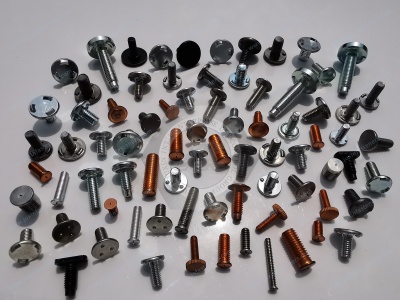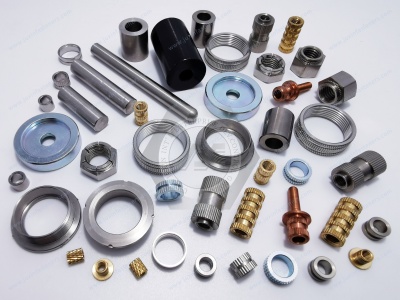Call Us
+86 136 6007 9809
Call Us
+86 136 6007 9809
Jun. 12, 2024
High-strength fastener assembly and installation methods of use industry solutions
Fastener varieties, specifications, large volume, and wide range of applications are standard parts' most common mechanical products. The reasonable selection of fasteners has become an essential part of the product design process, and the use of the correct or not directly related to realizing the product's function and its safe operation. Compared with general fasteners, high-strength fasteners in product design, manufacturing, assembly, inspection, and maintenance of the use of the requirements of the difference are very large in the operation of the equipment and also play a critical role. In mechanical products to large-scale, automation, intelligence, and other diversified developments of the situation, the use of high-strength fasteners as essential functional parts is growing, especially in critical occasions and necessary parts.
High-Strength 410 Stainless Steel Flanged Hex Head Screws for Sheet Metal: Stronger and more wear-resistant than 18-8 and 316 stainless steel, these screws are magnetic and mildly chemical resistant. They're not for use with aluminum sheet metal. All have a hex head for a secure grip with a wrench and a flange to reduce the risk of crushing thin metal. Screws penetrate 0.025" and thinner sheet metal. Length is measured from under the flange. Head height includes the flange.


High-Strength Steel Hex Head Screws with Material Certification: These screws come with a traceable lot number and a physical and chemical test report. Made from Grade 8 steel, they can be used in high-stress applications, such as valves, pumps, motors, and automotive suspension systems. They are at least 25% stronger than medium-strength steel screws. The zinc yellow-chromate plating resists corrosion in wet environments. The material meets SAE J429 specifications for quality. Dimensions meet ASME B18.2.1 specifications. Grade 8 steel hex head screws are marked with six radial lines. Length is measured from under the head.For high-quality EMil. Spec. High-Strength Steel Hex Head Screws fasteners and professional technical support, don't hesitate to co don't us at adelajonly@gmail.com or visit our website at [Juxin Fasteners]: https://www.juxinfasteners.com.
Assembly of high-strength fasteners
(1) The assembly of high-strength fasteners used in the mechanical performance level should be consistent with the performance level specified in the design drawings. It should not allow using low-strength performance fasteners instead of high-strength performance fasteners. Check whether the mechanical performance level of high-strength bolts, nuts, and washers is marked with the design requirements.
(2) High-strength fasteners used for important occasions and critical parts are not recommended for repeated use. If not repeated, use It, should be specified in the design documents and instructions for use.
For general occasions and standard parts, high-strength fasteners can be used twice; the country currently has no uniform provisions, and the practices of various industries and units are not the same.
If repeated use should be in the design documents and instructions for use in the provisions of the necessary inspection, fasteners to meet the requirements to be put into secondary use, General inspection content is.
① Appearance inspection:
There are no obvious bumping, extrusion traces, damage to the threaded teeth, bending and deformation of the bolt rod, necking phenomenon, or surface crack defects.
② Thread inspection:
Check the thread with a thread gauge. On the full length of the thread, check the pitch error and half-angle error.
③Magnetic particle inspection:
For batches of fasteners, each specification is proportional to the number of samples taken to check, less the number of full checks. Magnetic particle inspection shall not have cracks.
④ Torque factor:
When it is necessary to consider using the torque coefficient, re-determine it and use the measured torque coefficient for secondary tightening.
(3) Check the quality of high-strength bolts, nuts, and washers before installation. Good appearance, no dirt, no oil, no bumps and bruises; fasteners surface without cracks, dents, wrinkles, and other defects. If there is such a problem, should be evaluated according to the appropriate standards of the nature of the defects, failed shall not be put into use.
(4) For single-sided chamfered high-strength washers, the chamfered side of the washer should be placed under the bolt head to avoid interference between the washer and the bolt head under the rounded corner.
(5) High-strength fasteners should be tightened according to the torque specified. High-strength fasteners with torque coefficients provided along with the supply shall be maintained in their original state, shall not be cleaned or oiled, etc., and shall be tightened according to the specified tightening torque based on the torque coefficients provided; the fasteners that destroy the original state of the threads or exceed the warranty period of the torque coefficients shall be verified or re-calibrated; for fasteners that have not been provided with the torque coefficients, the tightening torque shall be implemented by the corresponding implementation of the standards.
(6) When tightening high-strength bolts or nuts, the bolts or nuts distributed in a round shape should be tightened in symmetrical and crosswise order, and the bolts or nuts distributed in line should be pulled from the middle to the outside, see Fig. 2. The tightening torque should be applied step by step and uniformly. The sudden increase in force should be avoided. The method in the mechanical industry, general parts and components product quality supervision and testing center for the tightening sequence comparison, has the best results.
(7) The tightening of high-strength bolts is divided into initial and final torque. The initial torque is about 50% of the specified torque, the torque is the specified torque, and the final tightening torque is checked individually. The tightening method requirements of the supporting parts should be carried out in accordance with their use and installation instructions.
(8) Check the quality of the bolt holes, threaded holes, only good processing quality, no burrs, dirt, deformation, etc., before loading high-strength bolts. When an installation error occurs, take appropriate measures to correct it, and do not forcibly drive into the bolt.
(9) Appropriate tools, such as Fuchi manual or electric power, etc., shall be used for fastening, and they shall not be used to knock the method of fastening. The head of the bolt or nut shall not be damaged after fastening. The fastening tools should be regularly tested according to the regulations, and their accuracy should be verified before each use.
(10) The area in contact with the head of high-strength bolts, nuts, and washers on the connected parts and its neighboring area should be kept with a metal surface, and the area should be clean and free of dirt. If the area has oil, paint, or other coatings, it should be removed and then assembled.
Many other factors affect the assembly performance of high-strength fasteners. For example, the material and heat-treated hardness of the internal and external threads, the quality of the fastening surface, and the length of the screwing.In addition, MoS2-coated threads can obtain a more stable torque coefficient to ensure the consistency of the tightening axial force, which also needs to be tested and studied.
It is of great significance to improve the quality of the products through continuous and in-depth research on the use of high-strength fasteners and the formulation of scientific and reasonable specifications to guide designers in design and selection and ensure that the re
Contact Us
Tel.:
+86 020 8621 0320
+86 020 3121 6067
Technical Support:
Navigation
SEND INQUIREY